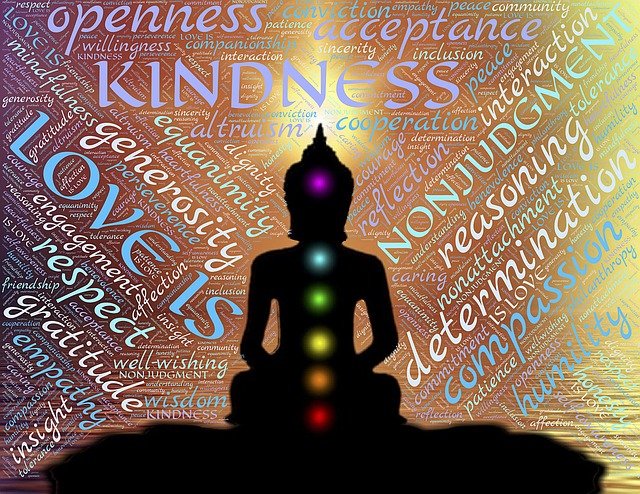In these challenging times, we often experience uncertainty and ambiguity which, in turn, leads to anxiety and depression. At the very least, these conditions can make us feel uncomfortable, annoyed or ill at ease. We normally want to be in control of our lives and have some certainty about our future. We try to create some sense, order and meaningfulness for our future by developing our plans for our career, family interactions, travel and personal development. In times of uncertainty like the present, we can become disoriented when these plans are disrupted, put on hold, deferred or cancelled altogether because of lockdowns, border closures, ill-health, international conflicts or major natural disasters.
We need some strategies to help us cope with this uncertainty and ambiguity. Over time, we have to develop ways to tolerate these setbacks and anxiety-inducing conditions. The reality is that uncertainty and ambiguity are part of the human condition and cannot be avoided. Diana Winston offers one way of addressing this uncertainty and managing our response to challenging times. In her guided meditation podcast, Opening to Uncertainty, she provides a mindfulness meditation approach which she describes as “advanced practice” – not only is it challenging but also requires repetition and practice to enable us to widen our window of tolerance in the face of ever-increasing uncertainty and ambiguity.
Guided meditation on managing our response to uncertainty
- Diana begins the guided meditation with an initial focus on body posture which should be relaxed and comfortable but involve conscious choice that enables freedom of breathing. She begins the meditation practice encouraging multiple deep breaths that facilitate release of built-up tension and stress. Diana encourages us to “relax into the present moment” and become conscious of our bodily sensations – especially pockets or points of uptightness. As we wind down, we can progressively release specific points of tension.
- The next phase involves choosing an anchor that truly grounds us in the present and is unlikely to act as a trigger for heightened negative emotions or a trauma response. We each have our negative triggers and varying levels of tolerance to specific difficult situations. Our meditation anchor enables us to return to a chosen focus when we notice our mind wandering or when we experience strong challenging emotions.
- When negative emotions take over, we have the choice to work with the difficult emotion and its intensity (if we are at an advanced stage of meditation practice) or to use our anchor as a way to return to being grounded in the present moment.
- After addressing emotions around experienced anxiety, Diana moves the meditation to another stage where she encourages us to recall an occasion when we successfully dealt with some level of anxiety and ambiguity. Associated with this, is recalling the feeling of dealing positively with the stress – we can try to recapture those positive emotions to strengthen our belief in our own capacity to deal with current challenges. I found this activity particularly useful, because it is so easy to overlook past successes in dealing with anxiety when you are feeling overwhelmed with present challenges.
- The next stage of the meditation involved loving-kindness towards ourself. To begin with it is important to acknowledge that it is natural to feel anxiety in the face of uncertainty and ambiguity. Diana recommends that once we acknowledge this naturalness, we can express a positive desire such as, “May I meet uncertainty with grace and ease.” This request can be repeated as a way to reinforce the belief that we are able to manage uncertainty in whatever form it takes.
Reflection
I undertook this meditation on the day that I was due to receive my first COVID-19 vaccine. I was uncertain about what vaccine I was going to receive and concerned about the after effects, given that I suffer from a wide range of sensitivities and allergies. There was ambiguity to deal with as well – surrounding the availability of the different vaccines, their relative effectiveness and their after effects. However, I found that Diana’s guided meditation helped me to become grounded and prepared for most contingencies.
In her meditation, Diana encourages us to approach uncertainty and our response with openness and curiosity and a “willingness to be with that experience”. She stated that life has its “ups and downs” and sometimes terrible things happen as well as wonderful things. She maintained that it is illusionary to believe that life is an even, untroubled flow – we will be challenged at times and be able to cope to varying degrees with what confronts us.
Diana asserted that as we grow in mindfulness through meditation, we will be better able to deal with uncertainty and ambiguity and manage our response to challenging stressors and associated emotions. However, she asserted that managing our response to uncertainty is a long-term process. Her guided meditation can help in that regard.
Diana mentioned the availability of other MARC meditation podcasts via the UCLA Mindful App. Previously I have identified activities to maintain a positive mindset in the times of uncertainty and anxiety. In this blog, too, I have covered other meditation approaches to managing our response to uncertainty:
- Jill Satterfield provided a meditation on using breath as a restorative process in challenging times.
- Diana Winston offered an approach which focuses strongly on gratitude.
- Kristin Neff and Chris Germer provided a range of self-compassion practices to enable us to manage in challenging times, including the pandemic.
- MARC meditations incorporate a range of other meditations that can reduce anxiety in times of uncertainty and challenge.
___________________________________________
Image by Gerd Altmann from Pixabay
By Ron Passfield – Copyright (Creative Commons license, Attribution–Non Commercial–No Derivatives)
Disclosure: If you purchase a product through this site, I may earn a commission which will help to pay for the site, the associated Meetup group, and the resources to support the blog.


